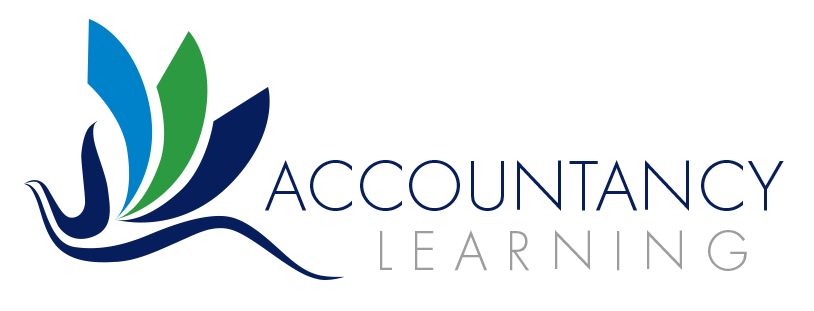IFRS 15 Revenue from contracts with customers
IFRS 15 Revenue from contracts with customers is examinable in your AAT exams now, replacing IAS 18 Revenue and IAS 11 Construction contracts. The good news is that the while there are differences, the overall approach is not significantly different. The new standard tightens up on practice which many companies would have been following anyway. It also has a greater emphasis on reporting useful information about revenue rather than just working out how much the revenue should be.
The core principle of IFRS 15 is that an entity shall recognise revenue to depict the transfer of promised goods or services to customers in an amount that reflects the consideration to which the entity expects to be entitled in exchange for those goods or services (para 2).
IFRS 15 requires companies to recognise revenue by following a series of steps.
Identify the contract with the customer
This is an important first step as we don’t want companies to overstate revenue because of fictitious contracts. Also the amount of revenue may be measure incorrectly if the terms of the arrangement between the company and its customer are not clear (although a badly written contract would still cause problems!).
A contract is an agreement between two or more parties that creates enforceable rights and obligations (para 10). The following criteria (para 9) must be met.
- The parties to the contract have approved the contract (in writing, orally or in accordance with other customary business practices) and are committed to perform their respective obligations – if there is no approval or commitment then the company won’t earn any revenue.
- The entity can identify each party’s rights regarding the goods or services to be transferred – this is important as the company will recognise revenue as these goods or services are transferred so if we cannot identify them then we won’t know when to recognise the revenue.
- The entity can identify the payment terms for the goods or services to be transferred – this is necessary for the same reason as the previous point.
- The contract has commercial substance (i.e. the risk, timing or amount of the entity’s future cash flows is expected to change as a result of the contract) – if there is no commercial substance then there is no real revenue to earn or recognise.
- It is probable that the entity will collect the consideration to which it will be entitled in exchange for the goods or services that will be transferred to the customer. It is likely that the company will recognise a receivable at the same time as the revenue and as normal we cannot recognise an asset unless there is probable future benefit.
If these criteria are not met but the company still receives some money from a customer then it can only be recognised as revenue is inter alia it is not refundable.
Identifying performance obligations
At contract inception, an entity shall (para 22) assess the goods or services promised in a contract with a customer and shall identify as a performance obligation each promise to transfer to the customer either:
(a) a good or service (or a bundle of goods or services) that is distinct; or
(b) a series of distinct goods or services that are substantially the same and that have the same pattern of transfer to the customer.
A good or service that is promised to a customer is distinct if both of the following criteria (para 27) are met:
(a) the customer can benefit from the good or service either on its own or together with other resources that are readily available to the customer (i.e. the good or service is capable of being distinct); and
(b) the entity’s promise to transfer the good or service to the customer is separately identifiable from other promises in the contract (i.e. the promise to transfer the good or service is distinct within the context of the contract).
If a promised good or service is not distinct, an entity shall combine that good or service with other promised goods or services until it identifies a bundle of goods or services that is distinct. In some cases, that would result in the entity accounting for all the goods or services promised in a contract as a single performance obligation. (para 30)
We need to identify each of the performance obligations as the company will recognise revenue as each obligation is satisfied. So at Accountancy Learning we provide the following performance obligations (depending on which service you have bought from us):
- Books
- Online lectures
- Progress tests
- Progress test marking and feedback
- Practice assessments
- Practice assessment marking and feedback
- Monthly contact
- Six-weekly reviews
- Support with portfolio compilation
The supply of books can be considered distinct. We deliver them to you and we should recognise a portion of the contract revenue when we do that. Similarly, each time we mark work we should recognise revenue for satisfying that distinct performance obligation. It’s likely that the supply of the progress test and marking of that progress test would be combined to form a single distinct performance obligation.
Determining the transaction price
An entity shall consider the terms of the contract and its customary business practices to determine the transaction price. The transaction price is the amount of consideration to which an entity expects to be entitled in exchange for transferring promised goods or services to a customer, excluding amounts collected on behalf of third parties (for example, some sales taxes) (para 47).
So when we deliver some books to you we would recognise as revenue the cover price of those books plus revenue for the postage and administration of dispatching those books.
An amount of consideration can vary because of discounts, rebates, refunds, credits, price concessions, incentives, performance bonuses, penalties or other similar items (para 51).
Variable consideration may be recognised as revenue as long as it is highly probable that that a reversal will not occur (para 56). Variable consideration may be measured using either an expected value or the most likely value depending on whether there are multiple contracts or a single contract (para 53).
The revenue recognised should be discounted if payment will be received over more than a year (para 60-63).
Allocating the transaction price to performance obligations
We know what the total contract price is and we have identified all of the performance obligations. So in this step a company needs to apportion the total contract price between the distinct performance obligations. This should be done based on stand-alone prices. The FSLC Osborne Tutorial book has a retail price of £18. This is the stand-alone price for the book and this is the amount of the total contract price that should be recognised when the book is delivered to you.
However, if there are multiple performance obligations, the customer may receive a bulk discount. This should be allocated proportionally to the various performance obligations (para 81) unless it is clear that the discount relates to one obligation only.
Satisfaction of performance obligations
Companies recognise revenue when (or as) they satisfy a performance obligation by transferring a promised good or service to their customers (para 31). If the performance obligation is satisfied over time the revenue should be recognised over time as well (para 35).
At Accountancy Learning you have access to our online lectures. Potentially we could recognise revenue when you watch each lecture but some people prefer to read the transcripts rather than watch the lectures and some people watch certain lectures more than once. So it would be more practical to recognise the revenue over the number of months you have access to the course.
IFRS 15 allows a variety of methods for recognising the stage of completion of a performance obligation. A company could measure it based on the level of output generated or on the amount of inputs.
Costs
IAS 11 Construction contracts also explained how to deal with costs and this is also included in IFRS 15. The costs that are directly related to a contract (labour, materials, overheads) are allocated to an asset (let’s call it work in progress) (para 97). Costs that do not directly relate to the contract (administrative, wasted materials and labour, costs related to satisfied performance obligations) are shown as expenses right away (para 98).
The asset is amortised or transferred to cost of sales in a way that is consistent with the transfer to the customer of the goods or services to which the asset relates. We saw above that we may recognise revenue according to the stage of completion and this may be measured by looking at the proportion of inputs or outputs achieved and the costs would be recognised using the same basis (para 99).
The work in progress asset is impaired if its carrying value exceeds:
- the remaining amount of consideration that the entity expects to receive in exchange for the goods or services to which the asset relates; less
- the costs that relate directly to providing those goods or services and that have not been recognised as expenses.
The work in progress asset is an asset because of the future economic benefits it creates, that is, the money the customer will pay under the contract. But if the customer may not pay then the asset may be impaired.
Disclosure
The rest of IFRS 15 details the information that companies need to disclose. As with all of the IFRSs, the aim is to provide useful information to the readers of the financial statements.
Conclusion
This is a summary of IFRS 15 and much of the detail is missing from this blog. But hopefully, it has helped to give you an overall understanding of the approach. Many companies have been following this approach anyway so there will be little change, but for some companies, the identification of all the distinct performance obligations and apportioning revenue between them will be new and could be a burden if their systems are not set up to facilitate it.






